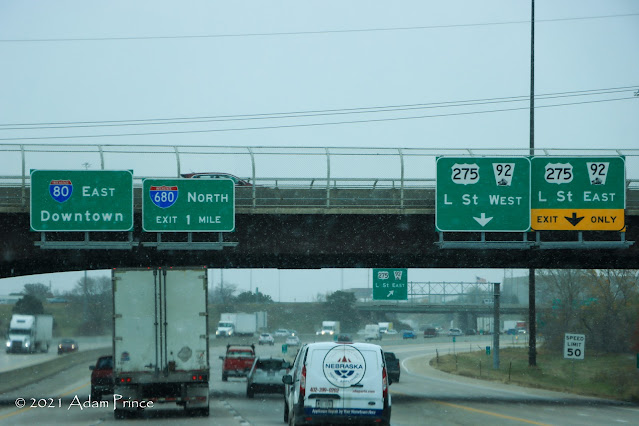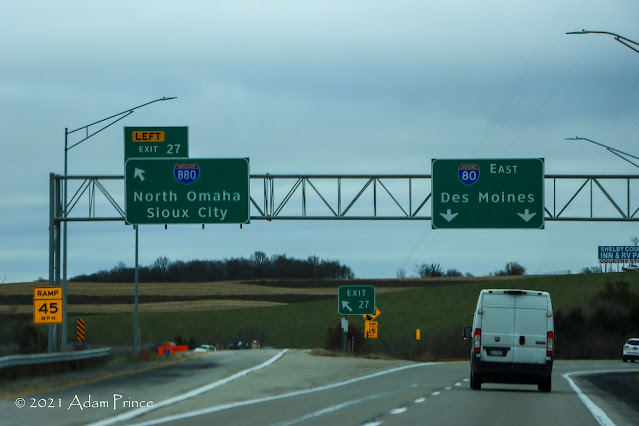Wyoming and South Dakota were amazing - but now it's time to head back to North Carolina with two long days of driving ahead.
Day 7 Route: I-180, I-80, I-74, local roads to Champagne, IL.
Photo Set on Flickr: Wyoming Road Trip Day 7
Day 8 Route: I-74, I-465, I-65, I-64, I-75, I-40, US 25/70, I-240, I-40, NC 16, I-485, Home.
Photo Set on Flickr: Wyoming Road Trip Day 8
Friday, Day 7, was a true go as far as you can in as little time as you can. The plan was to take two days to get back to Charlotte plus time for Joe to drive the three and a half hours to Wilmington on Saturday evening.
We left at around 5:30 am and finally traveled the infamous Interstate 180 to I-80 to start going west. Since it was dark, no photos, which I know to some in the roadgeeking hobby is probably a good thing.
We did, however, catch a pretty nice sunrise in Western Nebraska.
 |
| Snow flurries in Omaha - Somewhere in the Middle of America |
Interstate 80, as we discussed earlier, is a rather boring non-descript highway. But around Omaha, things got a little more interesting and some light snow flurries saved an otherwise photo-less part of the trip.
 |
| Interstate 880 is one of the newest designations in the Interstate System. |
This time I got to see Iowa in daylight. With the cold overcast day, there wasn't too much to take photos of, and by the time we go to Illinois, it was dark.
Saturday, Day 8, would be a little more interesting.
We weren't planning to go through Downtown Indianapolis, and that's a good thing. Construction on the I-65/70 "North Split" has Indiana recommending thru traffic to use the 465 loop.
We started to find a return to some fall color in Kentucky and Tennessee.
Our original plan was simple, take 40 through the mountains home. Unfortunately, a vehicle fire at the TN/NC line - and construction for a new bridge and wildlife underpass at the Harmons Den (Exit 7) interchange on I-40 were causing significant delays. So backup plan, US 25/70 to Asheville and I-40. It had been a good 12-15 years since I had taken this route, so it was a great final pleasant surprise.
 |
| US 25/70 in Eastern Tennessee |
With that, it was an easy ride home and the end to a wonderful trip.
2021 Wyoming Road Trip Site Navigation:














Comments